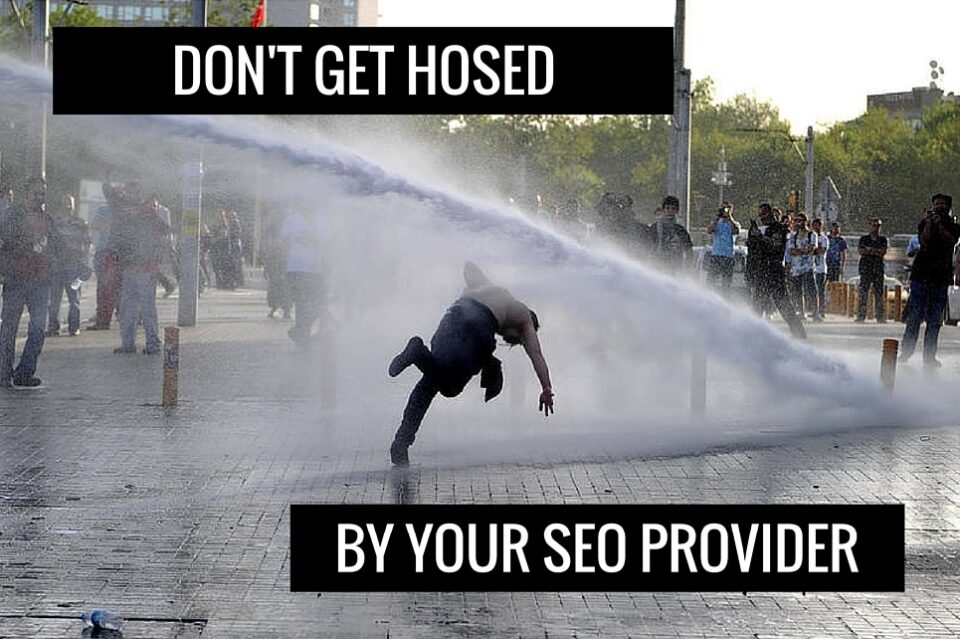

For an automotive dealer, search engine optimization (SEO) can still be a bit of an unknown. Dealers realize SEO is needed, but too many don’t fully grasp what website optimization is or how it should be executed. Making matters worse, with each “marketing guru” you ask, you will get a different answer on what SEO constitutes.
While there are few absolutes, we are going to provide an automotive SEO checklist for optimizing dealer websites. You will walk away with a foundation of SEO knowledge and an expectation of what your SEO provider should be implementing to get your website on the path of peak performance.
Step 1: Optimize Titles, Descriptions and Keywords
Titles, descriptions and keywords, also known as metadata, are an essential component for capturing the interest of shoppers searching for an automotive agency or service.

When you search on Google, Yahoo, or Bing, you are provided a list of websites that match what you are searching for. The titles, descriptions and keywords for your website are what are displayed by the search engine to persuade shoppers to click on your site rather than your competitors.
You want your metadata optimized so that it ranks the highest in the search results and so it screams “I’m the best! Click on me!”.
Let’s break it down further.
Page title tags are the most important piece of metadata. The purpose of the title is to summarize the related page and garner interest.
Titles should be simple and to the point. Don’t get too caught up in the character count, but your page title shouldn’t be a paragraph either. Titles should begin with the most important keywords first. Personally, I prefer a loose sentence structure.
Example: “Birmingham Toyota Dealer, Expert Sales and Certified Service”
You could re-write this title 10 different ways and it would still be correct.
Keep in mind there should be a unique title tag for every page of your site. There are a lot of SEO platforms that produce automated titles for your pages. These platforms will tell you your site has dynamic titles on every page. Don’t buy into it.
The only strict rule of page titles is not to have duplicate titles on your site. It’s easy to duplicate titles using an automated platform because if you forget to fill out a title, the system auto-populates a generic title. Pretty soon you have 30 pages with the same title, and Google drops your site ranking.
Now it’s time for the description. I believe the sole purpose of the description is to sell the click, that’s it. You can strategically add keywords, but focus more on a sales message. Don’t worry about sentence structure, don’t worry about grammar, just make sure that your description is selling the click.
Example: INCREDIBLE SAVINGS! Don’t miss your opportunity to get an AMAZING DEAL on the 2016 Toyota Camry at Birmingham Toyota. Shop NOW!
Keep in mind that the automated SEO platforms will also auto-generate your descriptions. The same rules apply. Your site shouldn’t have duplicate descriptions from page to page. Keep an eye out that these are being customized for you.
Lastly, we have the keyword field. Keywords should tell you what the main point of your page content is. The keywords don’t actually show up in the search engine results but they are found in your HTML coding.
Many SEO specialists will tell you that Google doesn’t read the keyword field anymore so it’s not relevant. However, you can learn a lot from reading the keyword field.
Why do we like the keyword field, if it’s not openly visible you ask? When creating content, I always start with the keyword field because it helps me stay focused when writing the rest of the content for the page.
I subscribe to the thought that each page should be focused on a singular topic. Therefore, you should only attempt to optimize your page for one keyword topic with a limited number of keyword phrases (maximum of 5). Typically, your keyword phrases should be two-to-four words each.

If you look at your keyword fields now and they are stuffed with dozens of different keywords, or single words separated by commas, your optimization provider probably doesn’t know what they are doing. It would be better if they are empty, and that’s ok.
Step 2: Optimize Content on Your Page
A lot of SEO providers will tell you to have at least 200–300 words on each page, and that is a good rule of thumb. But, I’ve seen pages with one sentence rank better than pages with 1,000 words. Your content should be engaging, informative, and provide value to the reader. The word count will work itself out.
You do, however, want your content as unique as possible. But don’t get too worried about duplicate content. Especially on an automotive website. Really, how many different ways can you describe a Honda Accord?
Everyone should be writing using Google’s best practices, but they should be more focused on who the end-user is.
Content should take into consideration your geographic region, demographics, and your dealership philosophy.
Just like a great car salesman, your provider should be the most knowledgeable of your brand while being relatable, understandable, and personable. Your end game is selling cars that meet people’s needs and for them to want to return to your dealership for service in the years to come. Your content should reflect that as well.
A big key for optimizing on-page content is the heading tag. They are great for organizing the paragraphs on each page. But more importantly, they give readers an idea of what the page is about and why it’s important. An SEO specialist should make sure to incorporate targeted keywords and geography.
It’s also important to add internal and external links in your content. Internal links help engage your shoppers and move them through your site. You want as much time with the shopper as possible. External links help search engines understand more about your page, convey it as a good reference source, and determine that it should rank well.
Step 3: Image Optimization
Once your individual pages have been optimized and linked correctly, you’ll want to start looking at the images posted on your site.
They should be crisp, unique images. All images should have a title and alt tag that correlates with the image. This is a big, big piece that a lot of people miss.
Unfortunately, website templates can come with a lot of stock images that are not customized to your dealership.
Step 4: Site Organization

All right, so those are the basics of optimizing pages within your website. As we mentioned before, it’s always a good practice to try to optimize pages for topics. This not only helps with optimization but also site organization. A keyword topic, for instance, would be “service.”
Ideally, your SEO provider would start with a page that serves as a hub for all things “service” at your dealership. Then, for individual services or products (i.e. “tires”), they would create another page. Your “tires” page could also serve as a hub page that would lead you to more specific pages about different types of tires.
This is all very important when deciding how to organize your main navigation, sub-navigation, and internal linking for pages. It will also be instrumental when you organize your content development efforts.
Step 5: Content Marketing
You’ve obviously heard a lot about content development as it relates to search marketing. Here are the four things you should consider when evaluating your content marketing: relevancy, recency, uniqueness, and frequency.
The more content on your site that’s relevant to your dealership, the business you do, and the community you serve, the better your site response is going to be.
If something is a recent topic right now as it relates to your business or your community, it’s going to gain more interest and be more relevant in search results. If you’re writing about something that happened a year ago, then obviously it’s not going to be as important to people.
Content should be unique – meaning your SEO provider should not copy and paste a press release from the OEM to post on your site.
Lastly, the frequency with which your content is posted is not as important as the quality of the content that is written. If the quality of your content is higher, then your content will have a little bit longer shelf life and doesn’t need updating as often. A good SEO provider will find a balance of writing something that’s unique and relevant, and at the same time keeping a good frequency of posting.
Step 6: Off-Site Optimization
The biggest off-site move an SEO provider can make to improve your dealership’s search visibility is link development. There are numerous ways to develop links directed to your website, but we will review two that are excellent for dealers.
The first one is local optimization, which is achieved through the optimization of local listings and directories. Think Yellow Pages, your Chamber of Commerce, or Better Business Bureau. A good SEO provider should help you to claim your online business listings and standardize your name, address, and phone number. You want to make sure your website URL is correct and present whenever possible.
The second opportunity for developing links to your website is through social marketing. A quality digital marketing provider will offer to do more than just posting pictures of vehicles on Facebook. A strategic plan should be implemented to develop posting that encourages engagement with your community, providing unique information and local content. The key is to develop content that is interesting enough to be shared through social links and blogs.
Ultimately these two techniques will help increase your domain authority, which means the pages on your website will have an opportunity to rank better, particularly in local search results.
Conclusions
Not all SEO providers and services are created equally. It’s critical to understand what is included in your digital marketing service. If you are not paying a lot for search optimization and you feel like you are getting a deal… the reality might be just the opposite.
If you want to take your learning to the next level, here are some great resources for learning about SEO and evaluating SEO work.
Awesome local SEO checklist
Brian Dean does a great job with SEO education, here is an on-page SEO overview
Finally, a great tool for evaluating on-page SEO very quickly.
Posted
John Paul Strong
John Paul Strong combines his two decades of automotive marketing experience with a team of more than 150 professionals as owner and CEO of Strong Automotive.


